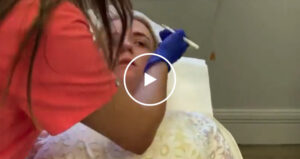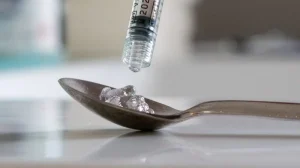Do you need relief from teeth grinding, headaches, jaw ache or discomfort when you eat?
Teeth grinding is a common problem and has a not-so-well-known potential solution. Here we share information on how you can improve symptoms and prevent the discomfort associated with it.
TMJ stands for ’temporo-mandibular joint’, the joint which is located on both sides of the head at the point where the jawbone meets the skull. Your TMJ is in use a lot – while you talk, eat, swallow and during other everyday activities – and disorders in this area manifest as jaw tension and pain, making you feel pretty uncomfortable. The muscle responsible for the movement of the TMJ is called the ’masseter’ – it’s the most powerful muscle in the human body so no wonder its hyperactivity can cause so many problems!
A common condition around the jaw area is ’bruxism’, the habit of grinding or clenching the teeth so hard to the point of causing pain, muscle spasm and teeth wear. In more extreme cases, it may even result in a ‘square-faced’ look. If you’re reading this, you or yor partner may well be suffering from this painful complaint and are therefore well aware of the symptoms. What may surprise you is that the well-known line-reducing injectable, Botulinum toxin (or Botox®), has proven to be effective in applications other than beauty, for instance having been used to control bruxism.
Teeth grinding affects at least 30% of the population during their sleep so you’re not alone. It has many causes, ranging from the presence of neurological disorders such as Parkinson’s disease, sleep disorders such as sleep apnoea and snoring and, more recently, stress and anxiety-related symptoms. In such cases, Botulinum toxin can be applied along the body of the masseter to relax it. If injections are administered over a sustained period of time, they should also correct the ’hypertrophic’ look – a square jaw – which can result from prolonged bruxism. They will encourage a more delineated jaw contour, especially for female patients.
So how does it work? Botox® acts by blocking the communication in between the nerve endings and the muscles, preventing their contraction. When applied to the masticatory muscles, Botulinum toxin has a relaxing effect, meaning a significant improvement in the gnashing of the teeth.
For clients suffering for years with jaw pain, the treatment has proven to be effective and given them relief from symptoms. It does need to be redone every year, however, according to the patient’s needs. The principle advantage of the procedure is that it provides a therapeutically-effective and fast result – on average, patients already feel the difference four to five days after application.
It’s important to note that, despite delivering good results, the application of Botulinum toxin does not guarantee a cure, only control of the painful contraction of the muscle that can cause wear and tear of the teeth. Therefore, treatment with Botulinum toxin should be allied to mouth guards and bite correction, as advised by your dentist or doctor.
As always with a medical condition, it is important to seek advice from a doctor or dentist. Reputable doctors like our team at The WY Skin Clinic will be able to diagnose your condition after a detailed consultation and advise the most appropriate treatment for you personally.






